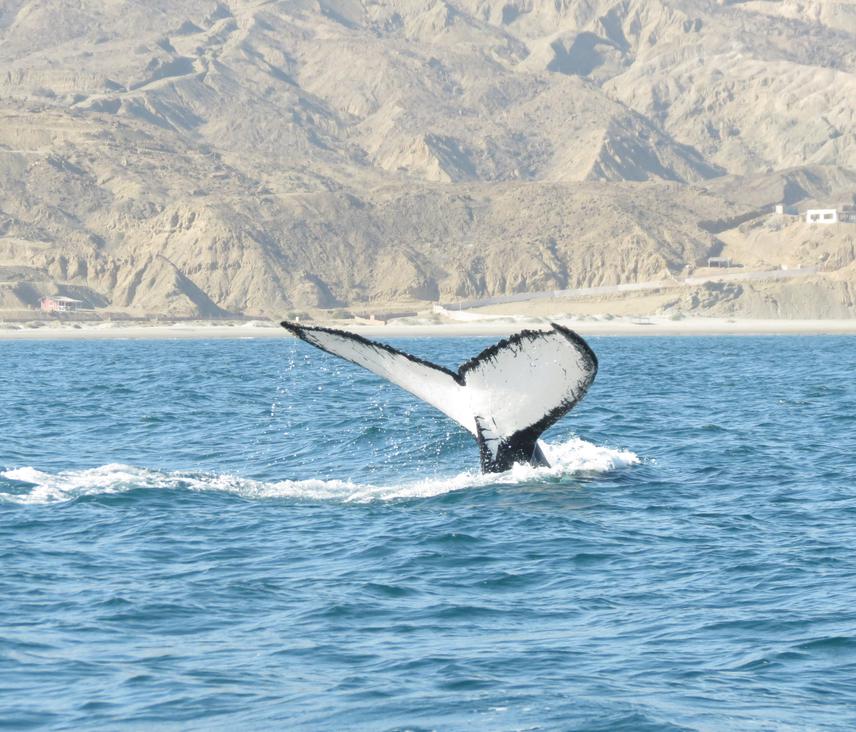Ana María García Cegarra
Other projects
4 Aug 2020
Whale-Watching in Northern Peru: Promoting Best Practices and Assessing Effects on Nursing Behaviour
17 Jan 2024
Are Whale-Watching Tourism and Entanglement in Fishing Nets Stressing Humpback Whales in their Breeding Area of Peru?
This project aims to determine short-term behaviour changes in humpback whales across the breeding area in northern Peru during whale watching boat encounters, and to evaluate the relationship between whale-watching experience and whale-watcher’s awareness of cetacean’s conservation status in order to foster their support to marine protection.

Humpback whale (Megaptera novaeanglia). © Ana M. Garcia Cegarra
Whale watching is an activity that may show two types of impacts; a negative effect by disturbing whales during boat encounters and a positive side which is the promotion of conservation awareness among people particularly for the protection of large baleen whales. However, research on this activity has focused mainly on the negative effects of several behavioural and ecological aspects of whale species and nothing have been done in order to really understand how the activity may impacts people´s perception and conservation commitment towards the species they watch. The development of sustainable whale-watching requires complete knowledge of its value as a tool for conservation which should be counterbalanced with its potential negative effects.
In northern Peru, whale-watching activity started in 2009 focusing on humpback whales during their breading season, which is crucial for growth, development and population welfare. Currently, 5 boats operate in the area without any guideline or regulation. It is known that a non-regulated whale-watching activity could lead in short-term behavioural changes of the observed animals. Yet, the mitigation of negative effects requires detailed information about the performance of the boats during whale-watching encounters which can be later transformed in criterion for the implementation of sound regulations of the activity. This project aims to determine short-term behaviour changes in humpback whales across the breeding area in northern Peru during whale watching boat encounters, and to evaluate the relationship between whale-watching experience and whale-watcher’s awareness of cetacean’s conservation status in order to foster their support to marine protection.